Power Up Your Performance with Macros for Powerlifting
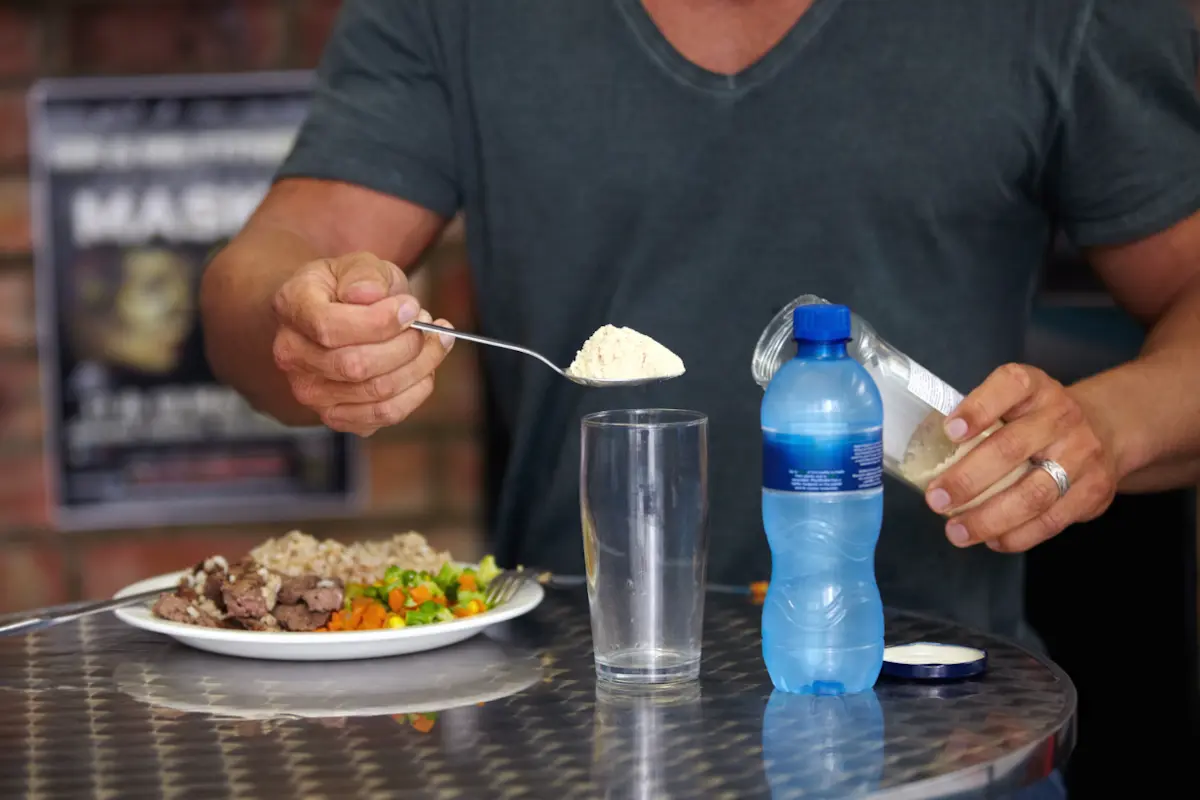
What's In This Article
- Key Highlights
- Introduction
- The Role of Protein in Powerlifting
- Carbohydrates: The Powerlifter's Fuel
- Fats: The Overlooked Nutrient in Powerlifting
- Hydration and Micronutrients for Lifters
- Balancing Macros for Powerlifting
- Conclusion
- Frequently Asked Questions
- References
- Resources
Key Highlights
- Powerlifters need higher protein intake than non-athletes, specifically 1.6 to 2.2 grams per kilogram of body weight.
- Carbohydrates serve as the primary energy source for high-intensity powerlifting and are stored as glycogen in muscles for quick access during training.
- Dietary fats play a crucial role in hormone regulation, particularly testosterone production, and should comprise 20-35% of total caloric intake.
- Even mild dehydration of 2.5% body water loss can significantly impair strength and power output during powerlifting.
- A common macronutrient ratio for powerlifters is 40% carbs, 30% protein, and 30% fats.
- Training cycles should influence diet adjustments, with higher carbohydrate intake during volume training and careful manipulation during competition phases.
Introduction
Understanding macronutrients in powerlifting is crucial for optimizing performance and recovery. Proteins, carbohydrates, and fats are the fuel that powers a powerlifting routine.
A good starting point is our free macros calculator. Emily Field, a registered dietitian, says "Macronutrients are the large nutrients that make up all of our food and there are three: proteins, fats, and carbs. ... By counting macronutrients, you're inherently counting the energy or the calories in your day, but what I like to really make clear for people is that calories can control your weight, can influence weight gain and weight loss and weight maintenance, but macronutrients can influence or control body composition and athletic performance and how you feel."

Understanding and monitoring your total calories is essential for reaching your powerlifting goals. Calculating your daily activity levels, daily energy expenditure and daily calories, and adjusting your intake can fuel your body for strength and muscle gains.
Proteins:
- The building blocks of muscle, proteins are crucial for repair and growth. When a powerlifter trains, the muscle fibres undergo stress and micro-tears. Protein facilitates the repair of these fibres, leading to muscle growth.
- This process, known as muscle protein synthesis, is pivotal for enhancing strength and size.
- Research suggests that powerlifters require higher protein intake than non-athletes, with recommendations typically ranging from 1.6 to 2.2 grams per kilogram of body weight or 1 gram per pound of body weight (Helms, Aragon, & Fitschen, 2014).
Carbohydrates:
- Often misunderstood and sometimes undervalued, carbohydrates are the primary energy source for high-intensity activities like powerlifting. They fuel workouts and aid in recovery.
- Carbohydrates are stored in the muscles and liver as glycogen, which powerlifters tap into during training. Adequate the type of carbohydrate intake ensures that these glycogen stores are replenished with nutrient-dense whole food sources, which is essential for consistent training performance (Iraki et al., 2019).
- On competition day, proper nutrition is crucial for optimal performance, with specific meal timing and macronutrient ratios being key factors.
Fats:
- While not a direct energy source for high-intensity workouts, fats play a vital role in overall health and hormone regulation, including testosterone production, which is crucial for muscle growth and strength.
- Fat intake should be addressed in a powerlifter's diet, with a recommendation of around 20-35% of total caloric intake coming from fats, primarily unsaturated sources (Kerksick et al., 2018).
The Role of Protein in Powerlifting
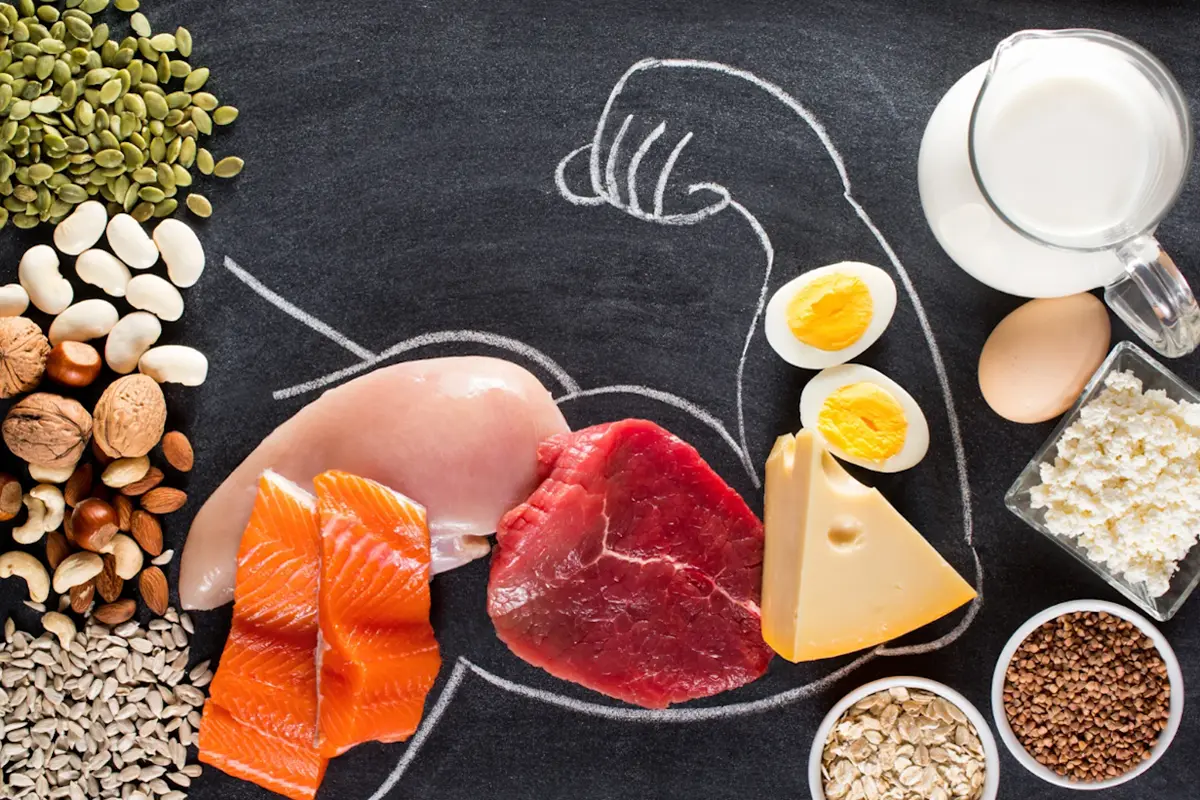
Why Protein is Essential
Protein's role in powerlifting transcends muscle building; it's fundamental in enhancing strength, a critical attribute for every powerlifter:
- When a powerlifter engages in intense training, its muscle fibres undergo significant stress, leading to microscopic tears.
- Protein repairs these tears, facilitating muscle recovery and contributing to muscle hypertrophy – an increase in muscle size.
- This hypertrophy is directly linked to enhanced strength, a key to lifting heavier weights.
- The science underscores the importance of protein in this context. A study by Moore et al. (2009) indicates that increased protein intake post-exercise aids in muscle protein synthesis, which is crucial for muscle repair and growth.
For powerlifters, protein isn't just a part of their diet; it's a critical tool in their strength-building arsenal, as it helps shift the body from protein breakdown to efficient rebuilding.
This is why many powerlifters supplement with protein powder or amino acids, especially in intense strength training, to ensure they get lots of protein for optimal recovery.
As for the recommended intake, powerlifters should aim for a higher protein intake than the average individual due to their intense training regimens:
- The general guideline suggests 1 gram per pound of bodyweight or 1.6 to 2.2 grams of protein per kilogram of body weight (Helms, Aragon, & Fitschen, 2014).
- This intake should be adjusted based on individual needs, training intensity, and goals, with a daily protein intake and meal frequency being crucial factors in achieving optimal performance and muscle growth in a powerlifter’s diet.
Best Protein Sources
Choosing suitable protein sources is like selecting the best quality fuel for a high-performance vehicle. Here's a list of high-quality protein sources:
- Animal-Based Protein Sources:
- Chicken Breast: Lean and packed with protein, ideal for muscle building.
- Lean Beef: A source of high-quality protein and essential nutrients like iron.
- Eggs: Versatile and rich in protein, providing all essential amino acids.
- Plant-Based Protein Sources:
- Lentils: A powerhouse of plant-based protein that also offers fibre.
- Quinoa: A complete protein source containing all nine essential amino acids.
- Tofu: Derived from soybeans, tofu is a versatile protein source that can be included in various meals.
Balancing these sources on a regular basis allows powerlifters to meet their protein requirements and ensure they receive a broad spectrum of other essential nutrients.
Carbohydrates: The Powerlifter's Fuel
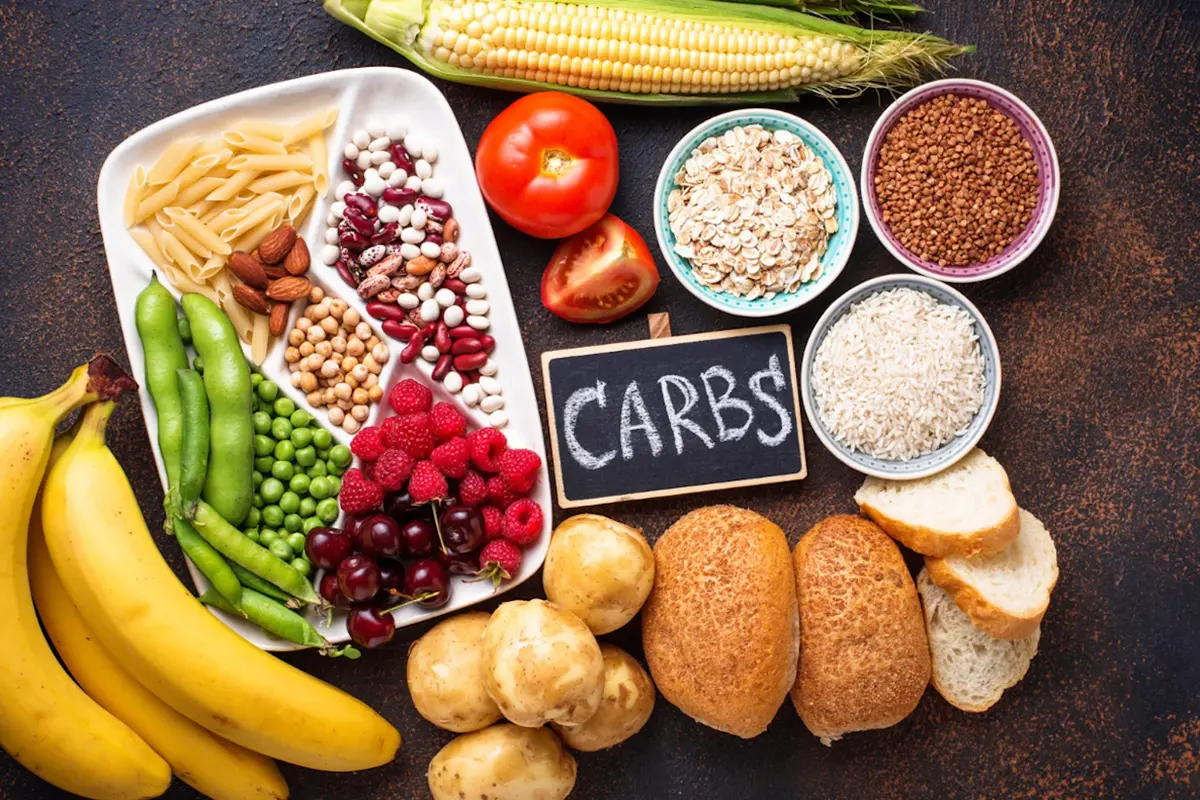
The Importance of Carbohydrates
Carbohydrates serve as the primary energy source for powerlifters, especially crucial during high-intensity training.
- Stored as glycogen in muscles and the liver, they are the body's most accessible amount of energy during heavy lifting sessions.
- The role of carbohydrates in strength performance is underscored by research indicating that adequate glycogen stores are essential for maintaining strength and endurance (Escobar et al., 2016).
- For powerlifters, maintaining sufficient grams of carbs is pivotal, not only for energy during workouts but also for enabling progressive strength gains. This is because carbohydrates are easily converted into a stored form of glucose called glycogen, readily available for quick fuel during training.
Types of Carbohydrates
Differentiating between simple and complex carbohydrates is essential for a powerlifter's diet:
- Simple Carbohydrates: These are rapidly digested and absorbed, providing a quick energy source. Common examples include fruits, honey, and dairy products. They are beneficial for immediate energy needs and are often consumed before or during workouts.
- Complex Carbohydrates: Digested more slowly, these provide a sustained energy release. They include whole grains, legumes, and starchy vegetables, forming the mainstay of a powerlifter's carbohydrate intake.
Timing carbohydrate intake is also critical:
- Simple carbohydrates are often consumed closer to workout times for an immediate energy boost.
- In contrast, complex carbohydrates are preferred in other meals for ongoing energy release.
For example, powerlifters might choose a quick-digesting carbohydrate like a banana before workouts and a complex carbohydrate such as brown rice or sweet potatoes in post-workout meals or at the end of the day to replenish glycogen stores and aid recovery.
Fats: The Overlooked Nutrient in Powerlifting
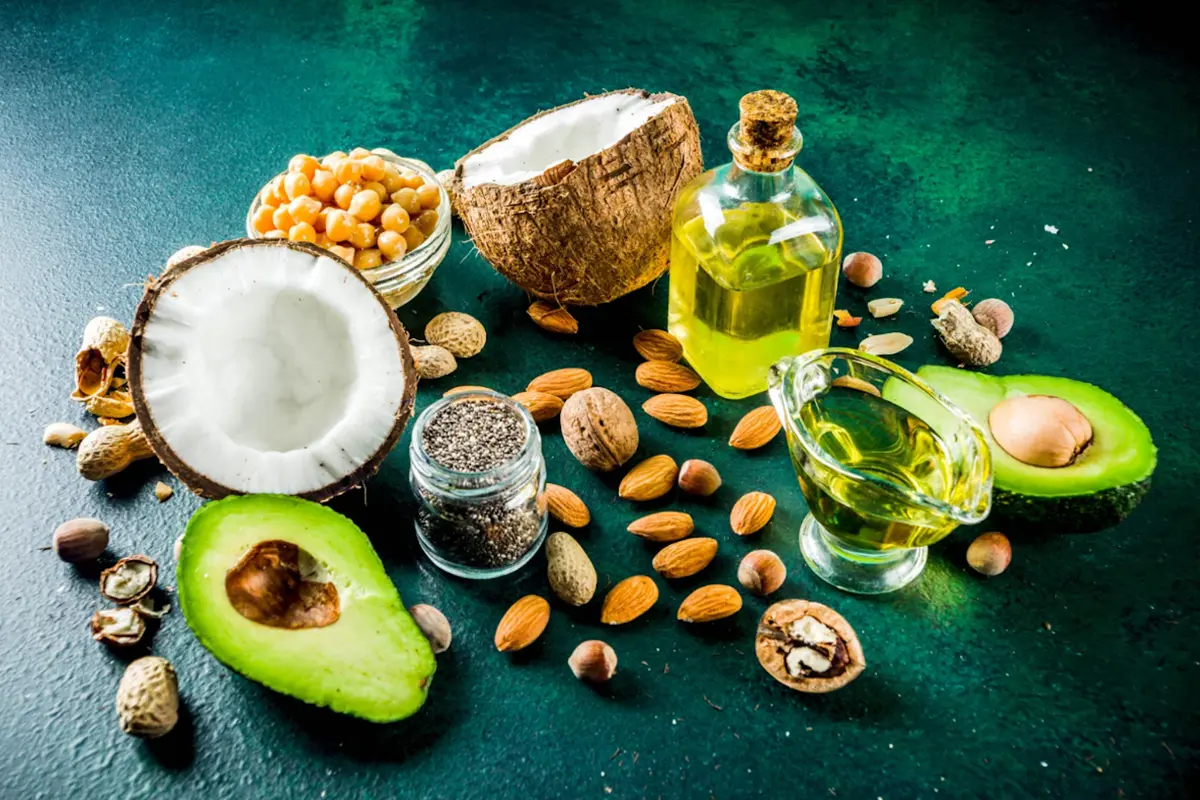
Why Fats Matter
Fats, often overshadowed in powerlifting nutrition, play a crucial yet understated role.
- Their significance extends beyond just being an energy source; fats are integral in hormone regulation, including the production of testosterone, an essential hormone for muscle growth and strength development. The relationship between dietary fats and testosterone levels has been highlighted in research, showing that low-fat diets can lead to decreased testosterone levels (Volek et al., 1997).
- Thus, incorporating a balanced amount of unsaturated fats, including polyunsaturated and monounsaturated fats, is not just about energy; it's about maintaining hormonal balance, which is crucial for optimal strength and performance.
- Harvard University shared a meta-analysis that concluded there is not enough evidence to show that saturated fat increases the risk of heart disease but that replacing saturated fats with polyunsaturated fat may reduce the risk of heart disease—advice backed by the American Dietetic Association.
- Fats also provide a more sustained and long-term energy source than carbohydrates. This is particularly important in training and recovery periods, where quick energy sources are less necessary.
- Fats absorb fat-soluble vitamins, contributing to a powerlifter's overall health and well-being.
Healthy Fats for Powerlifters
Here are examples of good fat sources and tips on how to effectively incorporate them:
- Avocados: Rich in monounsaturated fats, avocados can be added to meals as a healthy fat source.
- Nuts and Seeds: Almonds, walnuts, flaxseeds, and chia seeds are not only rich in fats but also in protein and fibre. They make excellent snacks or additions to meals.
- Oily Fish: Salmon, mackerel, and sardines are high in omega-3 fatty acids, which are beneficial for joint health and inflammation control.
- Olive Oil: A staple in healthy diets, olive oil is excellent for cooking or salad dressing.
Incorporating these fats into a powerlifter's diet should focus on balance and moderation in the total amount of calories. For example, adding a handful of nuts to a protein shake, using olive oil for cooking, or including a portion of oily fish in your meals a few times a week can effectively integrate these essential fats without overwhelming the diet.
Hydration and Micronutrients for Lifters
The Importance of Hydration
Hydration in powerlifting is akin to oil in a machine; without it, every function grinds to a halt. Water plays a pivotal role in both performance and recovery for powerlifters.
- During intense training, the body loses water through sweat, which can lead to dehydration if not adequately replaced.
- Even in small amounts, dehydration can significantly impair strength and power output, as highlighted in a study by Judelson et al. (2007), which found that a 2.5% decrease in body water can impair physiological function and performance.
- Proper hydration aids in joint lubrication, temperature regulation, and nutrient transport, all vital for optimal powerlifting performance.
- Powerlifters should stay hydrated before, during, and after training sessions. A general guideline is to drink fluids regularly throughout the day and adjust based on the intensity of the workout and sweat loss.
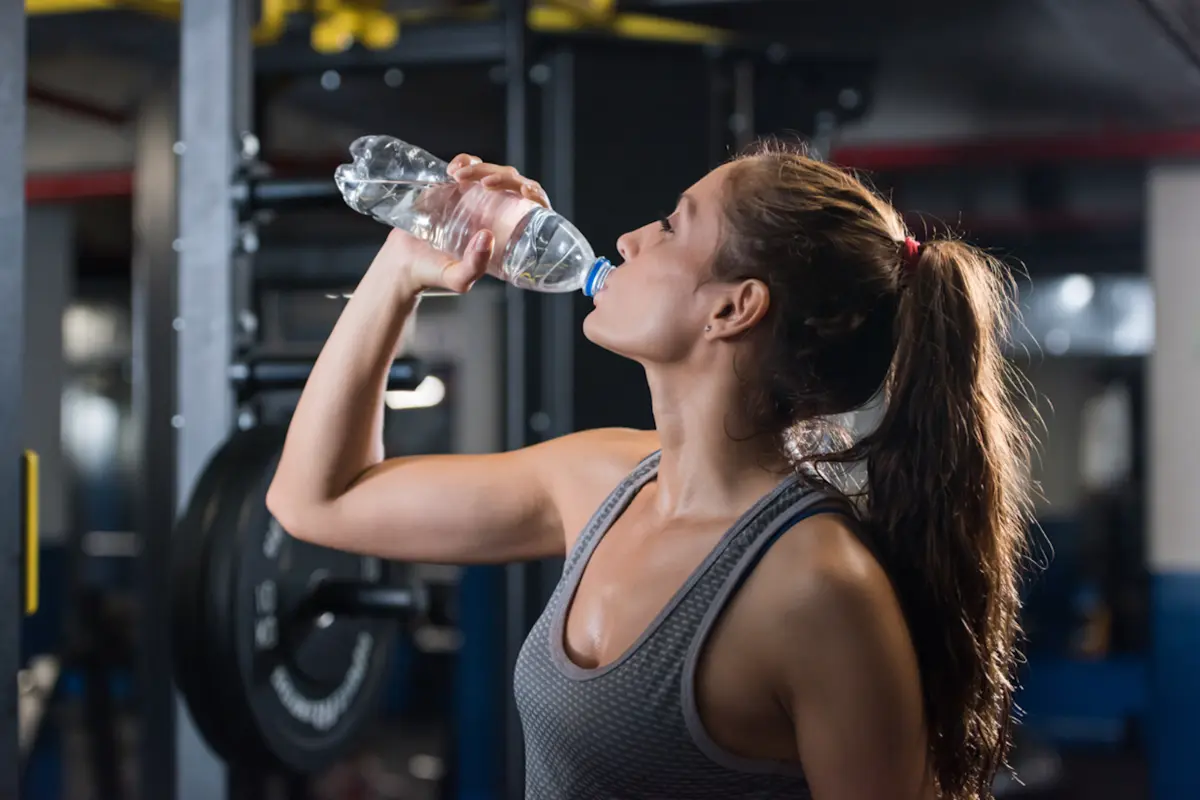
Essential Micronutrients
While macronutrients are the show's stars in powerlifting nutrition, micronutrients are the supporting cast that ensures the body functions optimally. Essential vitamins and minerals like iron, calcium, and magnesium significantly reduce oxidative stress and maintain overall health.
- Iron: Vital for oxygen transport and energy production, iron deficiency can lead to fatigue and impaired performance. Iron-rich foods include red meat, poultry, and leafy green vegetables.
- Calcium: Essential for bone health and muscle function. Dairy products, fortified plant-based milks, and green leafy vegetables are good calcium sources.
- Magnesium: Involved in muscle function and energy metabolism, magnesium can be found in nuts, seeds, whole grains, and leafy green vegetables.
These micronutrients support the body's physiological functions during intense training and aid in recovery and overall health. A balanced diet, possibly supplemented with a multivitamin (after consulting with a healthcare professional), can help meet these micronutrient needs.
Balancing Macros for Powerlifting
Creating a Balanced Diet
Achieving a balance in macronutrients within your daily calorie intake – proteins, carbohydrates, and fats – is akin to a powerlifter fine-tuning their technique: both are essential for peak performance and general health, including energy synthesis, especially when a caloric surplus or caloric deficit is maintained. Each macronutrient plays a unique role, and its balance can significantly affect a powerlifter's strength, energy levels, and recovery.
- Protein: As the building block of muscle, protein should be consistently high in a powerlifter's diet. The general guideline suggests 1.6 to 2.2 grams per kilogram of body weight, but this can vary based on individual needs and goals (Helms, Aragon, & Fitschen, 2014).
- Carbohydrates: Carbs are the primary energy source. Their intake should be aligned with training intensity – higher on training days and lower on rest days. A common approach is to consume 3 to 7 grams per kilogram of body weight based on training demands (Thomas, Erdman, & Burke, 2016).
- Fats: While fats should be moderated, they remain essential for hormone regulation and overall health. Approximately 20-35% of total caloric intake from fats, primarily unsaturated sources, is a standard recommendation (Kerksick et al., 2018).
A balanced diet for a powerlifter might look like a plate divided into thirds: one-third protein, one-third carbohydrates, and one-third vegetables (for fibre and micronutrients), with healthy fats sprinkled throughout.
Adjusting Intake Based on Training Cycles
Tailoring macronutrient intake to different training phases is important; it requires adaptation to the demands of the training cycle.
- Off-Season/Volume Training: During this phase, the focus is on building muscle and recovering. Carbohydrates and protein intake should be high to fuel workouts and aid in muscle repair and growth.
- Pre-Competition/Strength Phase: Here, the focus shifts to maximising strength. Protein remains high to maintain muscle mass, and carbs are adjusted to optimise energy levels for heavy lifting sessions.
- Competition/Peak Phase: In the days leading up to a competition, some powerlifters may adjust their diet to manipulate their weight class or maximise glycogen stores. This might involve a temporary increase in carbohydrates (carb-loading) and a slight reduction in fats and fibre to reduce weight without impacting strength.
These dietary adjustments should be carefully considered and potentially under the guidance of a nutritionist familiar with sports and powerlifting needs.
Conclusion
The synergistic role of macronutrients, hydration, and micronutrients is as crucial as training. Each component of nutrition plays a pivotal role in enhancing performance, supporting recovery, and ensuring overall health.
The interplay between these nutritional elements resembles a well-orchestrated symphony; each component must be harmonious for the best performance. Neglecting one aspect can throw off the balance, affecting overall powerlifting success.
Therefore, understanding and implementing a balanced nutrition plan that addresses the number of calories, roles of macronutrients, hydration, and micronutrients is fundamental for powerlifters aiming for peak performance and long-term athletic development.
Frequently Asked Questions
How much protein should I eat as a powerlifter?
1.6-2.2g per kg of body weight daily, or roughly 1g per pound.
Should I eat differently during training vs. rest days?
Yes - eat more carbs on training days and slightly reduce them on rest days while keeping protein constant.
Do I need protein supplements?
Not required if meeting protein needs through food, but they're convenient for hitting daily targets.
When should I eat my biggest meal?
Within 2 hours after training to maximize recovery and glycogen replenishment.
What are the best carbs for powerlifting?
Complex carbs like rice, potatoes, and oats for sustained energy; simple carbs like fruit for quick energy before workouts.
References
- Helms, E. R., Aragon, A. A., & Fitschen, P. J. (2014). Evidence-based recommendations for natural bodybuilding contest preparation: nutrition and supplementation. Journal of the International Society of Sports Nutrition, 11(1), 20. https://doi.org/10.1186/1550-2783-11-20
- Thomas, D. T., Erdman, K. A., & Burke, L. M. (2016). American College of Sports Medicine joint position statement. Nutrition and athletic performance. Medicine & Science in Sports & Exercise, 48(3), 543-568. https://doi.org/10.1249/MSS.0000000000000852
- Kerksick, C. M., Arent, S., Schoenfeld, B. J., Stout, J. R., Campbell, B., Wilborn, C. D., ... & Kreider, R. B. (2018). International Society of Sports Nutrition position stand: nutrient timing. Journal of the International Society of Sports Nutrition, 15(1), 20. https://doi.org/10.1186/s12970-018-0242-y
- Moore, D. R., Robinson, M. J., Fry, J. L., Tang, J. E., Glover, E. I., Wilkinson, S. B., ... & Phillips, S. M. (2009). Ingested protein dose response of muscle and albumin protein synthesis after resistance exercise in young men. The American Journal of Clinical Nutrition, 89(1), 161-168. https://doi.org/10.3945/ajcn.2008.26401
- Judelson, D. A., Maresh, C. M., Anderson, J. M., Armstrong, L. E., Casa, D. J., Kraemer, W. J., & Volek, J. S. (2007). Hydration and muscular performance: does fluid balance affect strength, power and high-intensity endurance? Sports Medicine, 37(10), 907-921. https://doi.org/10.2165/00007256-200737100-00006
- Volek, J. S., Kraemer, W. J., Bush, J. A., Incledon, T., & Boetes, M. (1997). Testosterone and cortisol in relationship to dietary nutrients and resistance exercise. Journal of Applied Physiology, 82(1), 49-54. https://doi.org/10.1152/jappl.1997.82.1.49
- Escobar, K. A., Morales, J., & Vandusseldorp, T. A. (2016). The Effect of Glycogen Depletion on the Curvilinear Relationship Between Muscle Glycogen and Exercise Performance. Journal of Strength and Conditioning Research, 30(1), 251-258. https://doi.org/10.1519/JSC.0000000000001059
Resources
- The Powerlifting Diet: Eating For Strength by Fitbod
- Fueling Strength: Crafting Your Powerlifting Diet Plan by SBD Ireland
- The Powerlifting Diet: How to Fuel Your Strength by Boostcamp
- Powerlifting Food Plan by Barbell Jack
- Nutrition For Powerlifting Performance: How To Eat To Fuel The Gainz by Ironside Training